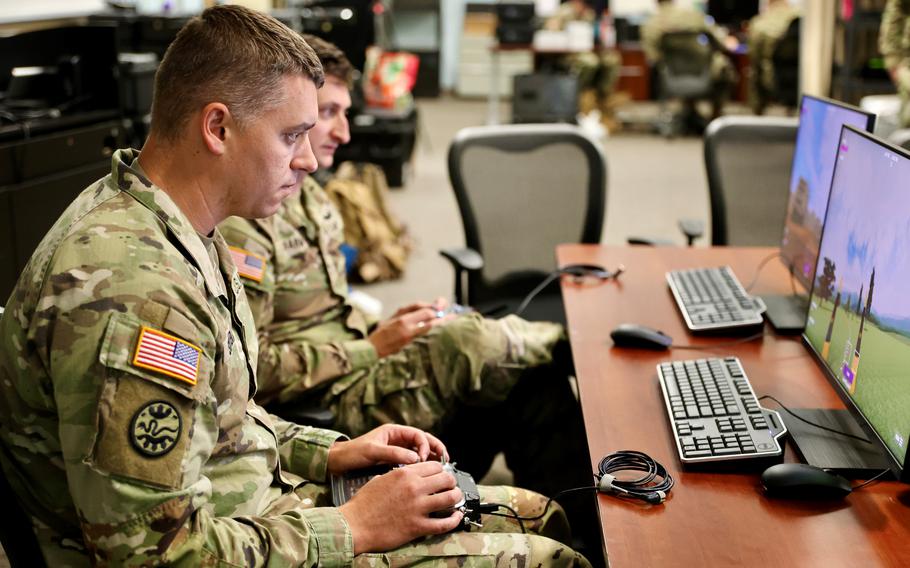CW3 Jakob Stavenau and SFC Jeremy Charm run drone simulators at Fort Rucker during the Army’s first Unmanned Advanced Lethality Course, part of a late push to catch up with adversaries already using drones to kill. (U.S. Army)
FORT RUCKER, Ala. — While Russian and Ukrainian fighters jury-rig quadcopters into kamikaze killers and China fields swarms with machine precision, the U.S. Army is still in the classroom trying to figure out which way is up on a drone joystick.
The brass calls it “Transforming in Contact.” Translation? Trying not to lose the next war with yesterday’s playbook.
At Fort Rucker—birthplace of Army aviation—28 soldiers are taking the inaugural Unmanned Advanced Lethality Course, an earnest attempt to bridge a gap so wide you could fly a drone battalion through it.
“This course is a catch-up,” said Capt. Rachel Martin, who built the entire program in just 90 days. “We’re behind globally, and this is our aggressive attempt to close that gap.”
Translation: we finally noticed we’re getting our asses handed to us by $400 FPV drones duct-taped with explosives.
The War’s Already in the Sky
Out in Ukraine, teens with gamer thumbs are dropping grenades down tank hatches. In China, swarm algorithms move like fish schools. And here? America’s finest are logging simulator hours and learning to 3D print propellers.
The three-week course starts with off-the-shelf toys and sim rigs. Soldiers get 20–25 hours in the chair before they’re trusted to fly for real. By week two, they’re assembling drone parts with 3D printers and logging performance data for Pentagon procurement weenies.
Eventually, they’ll design their own FPV drone bodies. One day, someone might even let them use them in combat.
Maj. Wolf Amacker, head of the Army’s UAS tactics branch, put it plainly: “We’re learning from the force on what’s possible.”
Let that sink in. America’s multi-trillion-dollar defense machine is learning from E-4s who used to race drones on weekends.
Hobbyists to Operators, in a Hurry
Most students are self-taught drone jocks—garage mechanics and gamers now being asked to write the manual. “Most of my peers, including myself until 90 days ago, didn’t know how to do this,” Martin admitted.
That candor’s refreshing—but also terrifying.
The Army is developing a mobile version of the course, so units can teach it themselves. That’s good, because with wars now fought in 4K from rooftops, battalion-level drone nerds will be worth their weight in lithium.
Future iterations will dive into attack tactics. Think suicide drones, precision strikes, and drone-on-drone warfare—things Russia and Ukraine have been doing since 2022.
Bottom Line: Too Little, Too Late?
The Army says the Fort Rucker program supports its “Transforming in Contact” doctrine, a big-picture overhaul launched in 2024 to modernize units with drones, EW, and comms gear.
Fine. But while the Army “transforms,” real battlefields don’t pause. The Army’s racing against a clock it didn’t start. Every month wasted in training gaps costs blood when the shooting starts.
This new course is a necessary step—but it should have been standard three years ago.
Here’s hoping the next Army flyer isn’t caught flat-footed while a 16-year-old in Donbas drops a $30 explosive through his hatch.




